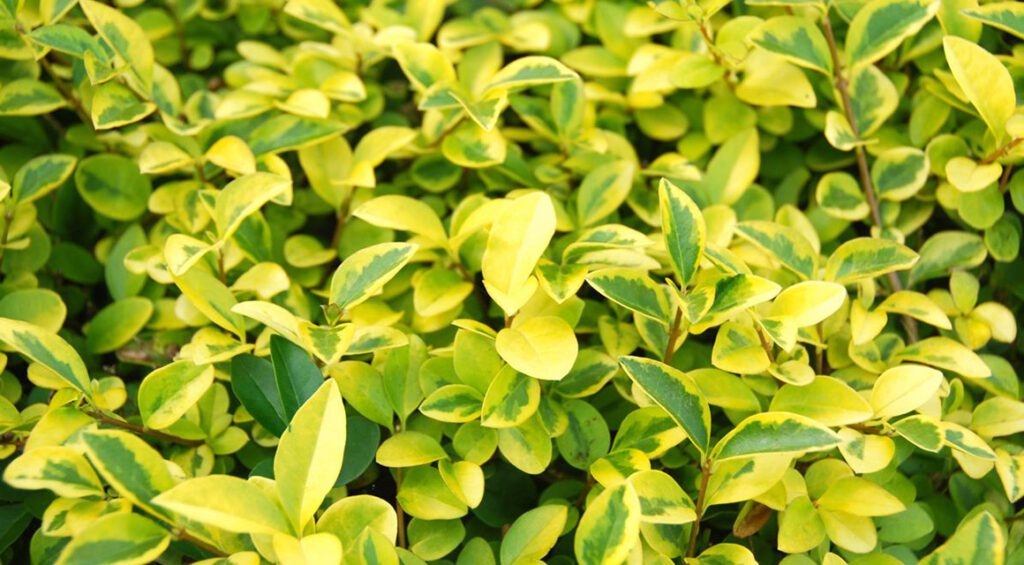Privet is a popular hedge plant that has been planted in our gardens for many, many years. A privet hedge can help give your garden a pleasant and natural look. Moreover, you can cut back this plant quite easily and generally privet hedges are also particularly healthy hedges that do not get sick easily. Nevertheless, it can happen that your privet hedge can also get sick or be hit by a pest infestation. What should you do in such a case? And how can you prevent your privet hedge from getting sick? But first, we will explain how you can tell if your privet hedge is diseased.

Contents
What diseases and pests can damage the privet?
The privet hedge in your garden can struggle with various mildew diseases. However, the most well-known mold disease is the velvet spot disease. Sometimes it is also quite possible for privet to get verticillium wilt. However, there are also pest plagues that are known to be common then only in the privet. You can think here, for example, of the fringe winged moths or also called thrips, the pear rust mites, the carnation moths, the small frost moths or also the apple bugs. These little critters can be particularly damaging to your privet hedge if you do nothing to control these pests.

Symptoms of a diseased privet hedge
Is your deciduous privet hedge being attacked by a mildew disease? If so, you can tell by looking at the leaves. The leaves then get brown or pale spots that quickly fall off. Young privet leaves can then also dry out quickly. The symptoms of a pest infestation, however, depend in each case on which pest has just found its way into your privet hedge. If privet leaves are dull or frayed, or if they develop black spots, then you should be especially vigilant. Eaten leaves are also a clear symptom of a pest infestation. Do you find caterpillars in your privet hedge? Then it is probably the small frost moth or the carnation moth.

What can I do if my privet hedge has mold disease?
Is your privet hedge struggling with a mold disease, such as velvet spot disease or verticillium wilt? If it is velvet blotch disease, then you should cut all the affected branches down to the old wood. Remove the branches immediately and put them in a closed garden waste bag. Clean your pruning tools thoroughly to prevent your hedge from becoming reinfected. Sometimes it is even necessary to severely prune back the entire privet hedge. For more aggressive mold diseases, like Verticillium wilt, the solution is not so simple. This is because with Verticillium wilt, the mold attacks the privet roots and the soil in which your hedge grows.
With Verticillium wilt, you should remove the entire privet hedge and replace it with a new hedge. Before planting a new hedge, you should remove the infected soil and replace it with new humus. The humus will then ensure that no new mildew diseases can form. After that, the soil will be ready for a new privet hedge. Be sure to buy only new, high-quality hedge plants. In fact, high-quality hedge plants are much more resistant when it comes to mold diseases and pest infestations. Of course, your privet hedge can still fall victim to a disease then, but the chance is significantly smaller with high quality hedge plants! What do you think of our oval-leaved privet excellent quality?

What should I look for when buying a new privet hedge?
It is important that your new privet hedge is healthy when you plant it. The health of the plants starts in the nurseries.
In addition, we offer several varieties of privet, so you can choose a suitable variety. Do you prefer a hedge that loses fewer leaves in winter? Then wintergreen privet ‘Atrovirens’ is a suitable hedge plant. We also have hedge plants in our assortment as container plants or even with a root ball. Do you perhaps want to plant a pretty, mature and opaque hedge in your garden right away? Then you should select a privet hedge as a ready-made hedge! A prefabricated hedge will immediately have the height you desire and it will be fully grown. Such a prefabricated hedge consists of various hedge elements that you simply plant next to each other in your garden soil.

